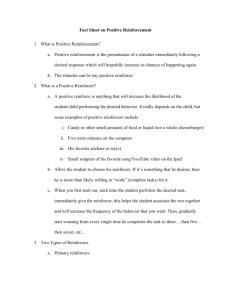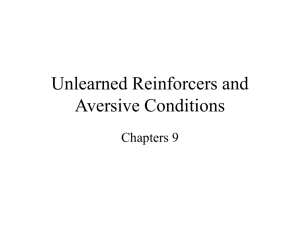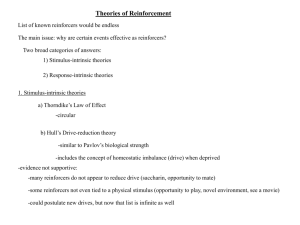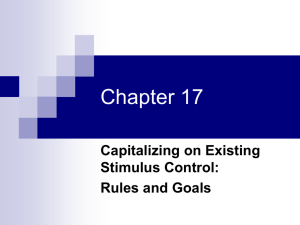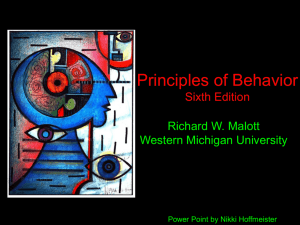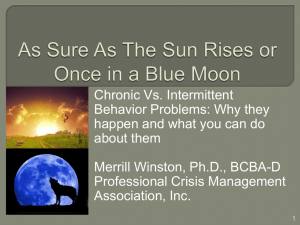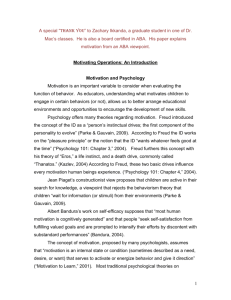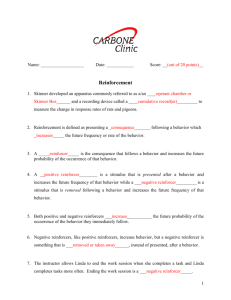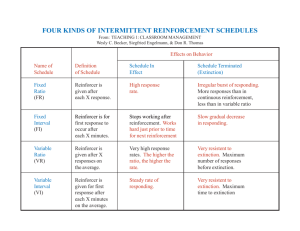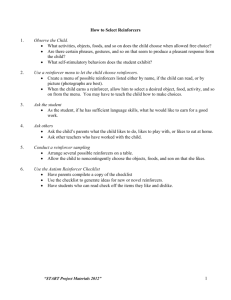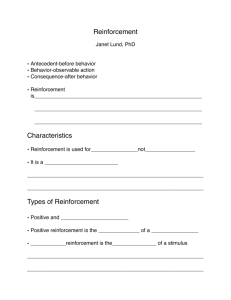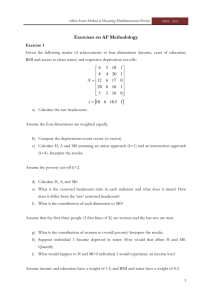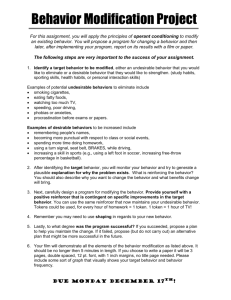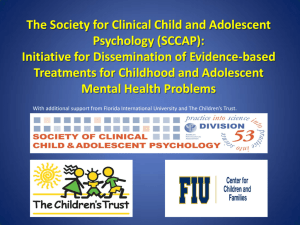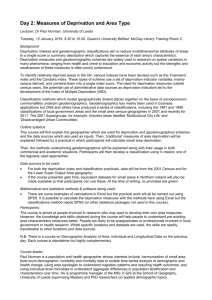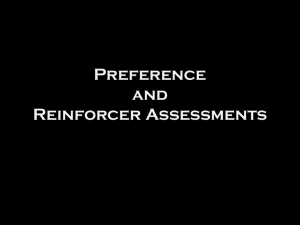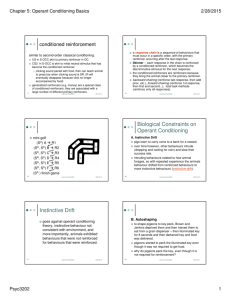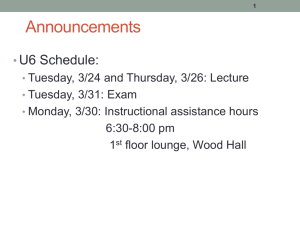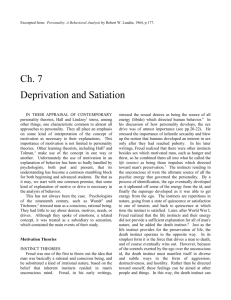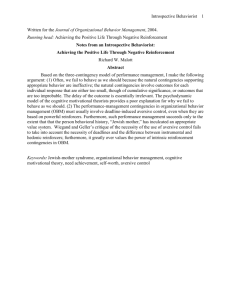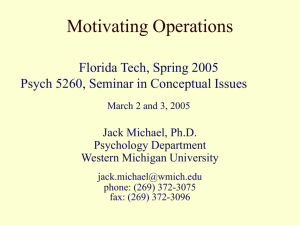Chapter 9 - old.old.dickmalott.com
advertisement
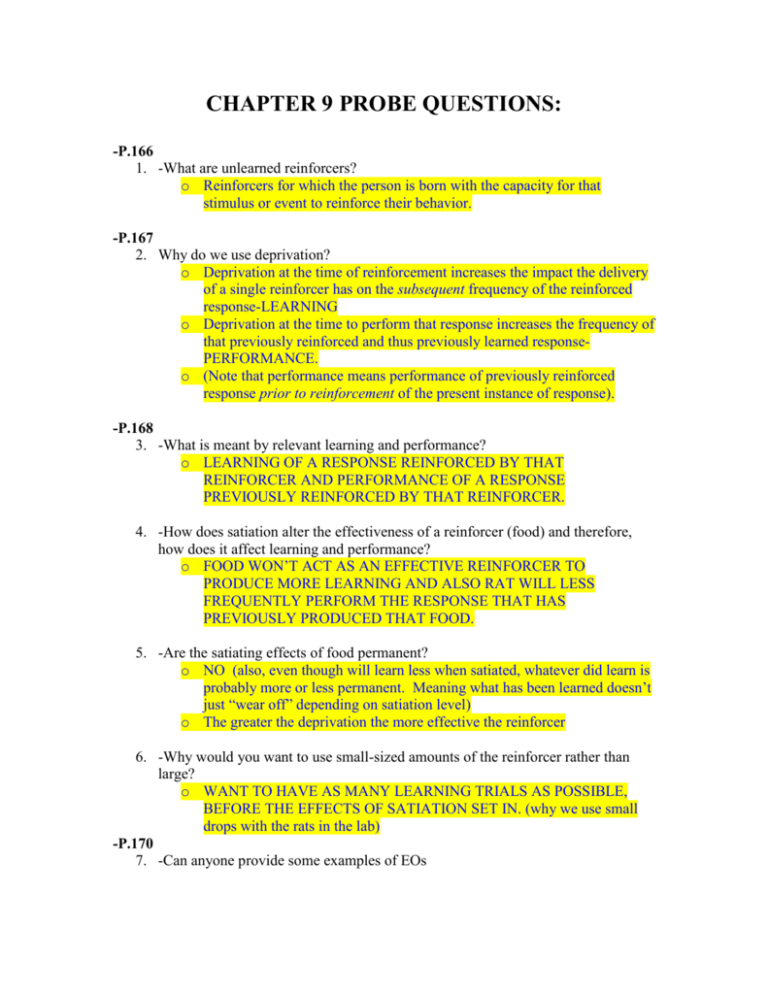
CHAPTER 9 PROBE QUESTIONS: -P.166 1. -What are unlearned reinforcers? o Reinforcers for which the person is born with the capacity for that stimulus or event to reinforce their behavior. -P.167 2. Why do we use deprivation? o Deprivation at the time of reinforcement increases the impact the delivery of a single reinforcer has on the subsequent frequency of the reinforced response-LEARNING o Deprivation at the time to perform that response increases the frequency of that previously reinforced and thus previously learned responsePERFORMANCE. o (Note that performance means performance of previously reinforced response prior to reinforcement of the present instance of response). -P.168 3. -What is meant by relevant learning and performance? o LEARNING OF A RESPONSE REINFORCED BY THAT REINFORCER AND PERFORMANCE OF A RESPONSE PREVIOUSLY REINFORCED BY THAT REINFORCER. 4. -How does satiation alter the effectiveness of a reinforcer (food) and therefore, how does it affect learning and performance? o FOOD WON’T ACT AS AN EFFECTIVE REINFORCER TO PRODUCE MORE LEARNING AND ALSO RAT WILL LESS FREQUENTLY PERFORM THE RESPONSE THAT HAS PREVIOUSLY PRODUCED THAT FOOD. 5. -Are the satiating effects of food permanent? o NO (also, even though will learn less when satiated, whatever did learn is probably more or less permanent. Meaning what has been learned doesn’t just “wear off” depending on satiation level) o The greater the deprivation the more effective the reinforcer 6. -Why would you want to use small-sized amounts of the reinforcer rather than large? o WANT TO HAVE AS MANY LEARNING TRIALS AS POSSIBLE, BEFORE THE EFFECTS OF SATIATION SET IN. (why we use small drops with the rats in the lab) -P.170 7. -Can anyone provide some examples of EOs o Deprivation, satiation, heavy exercise, high temperature, consumption of salt, sleep deprivation, illness, allergies, menses 8. -Do Satiation and Deprivation apply to aversive conditions? o NO, you can not satiate or become deprived of shock (the relevant EO for an aversive condition is simply turning on (presenting) the aversive condition-shock. o EO same as before condition, no need for separate diagram) -P.172-173 9. -Can someone provide some examples that are unlearned reinforcers naturally associated with food: o SIGHT, SOUND, TASTE, SMELL -P.173 10. -What is the biologically important reason for orienting towards sights and sounds? o IT HELPS ANIMALS/HUMANS TO AVOID INJURY AND DEATH (TO SURVIVE) 11. -What are the two types of unlearned reinforcers? o THOSE THAT EITHER DIRECTLY OR INDIRECTLY CAUSE BIOLOGICAL BENEFITS o DIRECT: food and water/predator bite and spoiled food o INDIRECT: sight, sounds, smells, and tastes/ shadow of hawk, loud noise, or taste and odor of spoiled food -P.175 12. -Can someone describe an example in the book that talks about the Premack Principle: o TEACHER: disrupting was more reinforcing than sitting and listening to the teacher and used those activities that occurred at a high frequency as reinforcers for activities that occurred at a low rate. o MONKEYS: used four activities: pushing a lever, pulling a plunger, flapping a hinge, and opening and closing a door.
